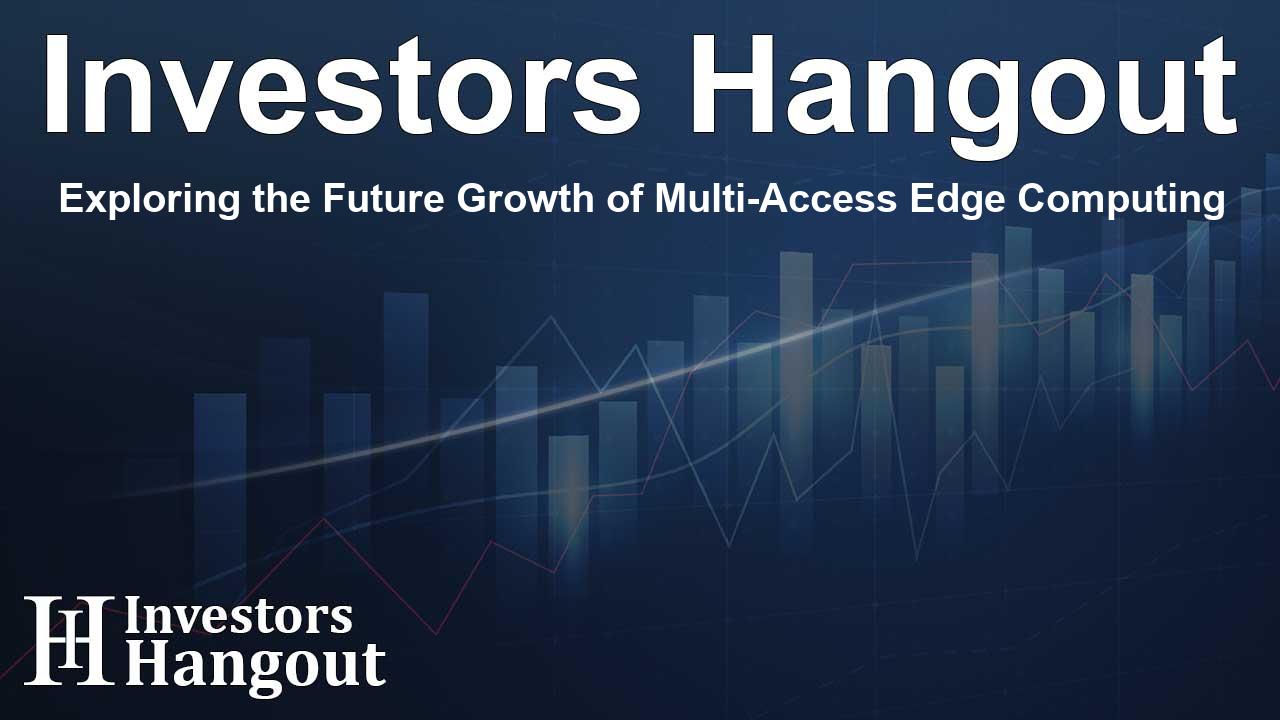Exploring the Future Growth of Multi-Access Edge Computing

The Rise of Multi-Access Edge Computing Market
The multi-access edge computing (MEC) market is poised for remarkable growth, with an estimated valuation reaching USD 46.9 billion in the coming years. This growth is largely attributed to the rapid advancements in 5G technology, which demands efficient data processing strategies. As industries integrate MEC solutions, they can achieve lower latency and enhanced efficiency, essential for applications ranging from autonomous vehicles to smart cities.
Driving Forces Behind MEC Adoption
One of the primary catalysts for the surge in MEC demand is the global rollout of 5G networks. The ultra-low latency and high bandwidth capabilities of 5G necessitate the processing of data right at the edge of the network, near the end-users. MEC makes this possible by facilitating localized data processing, significantly improving response times for technologies like augmented reality and telemedicine.
Impact on Smart Cities
The emergence of smart cities further amplifies the need for MEC solutions. These urban areas rely heavily on real-time data from IoT devices to manage their resources efficiently. For example, traffic management systems that rely on IoT sensors can greatly benefit from the quick data processing offered by MEC, thus enhancing the sustainability and efficiency of urban life.
Connected Vehicles and MEC
Connected vehicle systems also play a crucial role in the MEC market dynamics. Features that ensure safety and connectivity in vehicles depend on real-time data analysis. MEC's capabilities of processing information promptly and locally are vital for maintaining safety standards and operational efficiency in these smart transportation systems.
The Hardware Component of MEC
The hardware segment within the MEC market recorded an impressive value of USD 1.6 billion. This growth highlights the shift towards edge-optimized solutions, prompting the redesign of traditional data center hardware to cater to the specific needs of edge computing. The development of rugged, compact, and energy-efficient devices helps ensure that companies can deploy these systems in diverse environments, from urban settings to remote locations.
Cloud-Based Solutions in MEC
Furthermore, cloud-based solutions within the multi-access edge computing market are expected to thrive, projected to surpass USD 35.7 billion. The increasing trend towards serverless computing not only streamlines application development but also reduces operational costs, thereby encouraging more businesses to adopt cloud solutions for their MEC needs.
Regional Insights on MEC Market Growth
North America currently leads the multi-access edge computing market, holding an impressive 43% market share. The region’s swift adoption of 5G technology serves as a foundation for this dominance, with many global 5G connections originating from here. As companies continue to leverage innovative technologies, the North American sector is set to expand further, fostering a competitive edge in edge computing solutions.
The Future of MEC
Looking ahead, the multi-access edge computing market appears to be on a strong upward trajectory. As 5G technology continues to advance and industries increasingly recognize the importance of low-latency data processing capabilities, the relevance and application of MEC will undoubtedly expand across various sectors.
Frequently Asked Questions
What is multi-access edge computing?
Multi-access edge computing (MEC) is a network architecture concept that enables data processing close to where it is generated, minimizing latency and improving efficiency.
How does 5G influence MEC growth?
5G networks provide high-speed connectivity and low latency, creating a demand for MEC solutions that process data near the end-users, enhancing application performance.
What are the applications of MEC?
MEC is used in various applications, including autonomous vehicles, smart cities, augmented reality, telemedicine, and industrial automation.
Why is hardware important in MEC?
The hardware segment focuses on edge-optimized devices that meet the unique demands of MEC, ensuring efficient data processing in diverse environments.
What are the benefits of cloud-based MEC solutions?
Cloud-based MEC solutions provide flexibility, scalability, and reduced operational costs, catering to modern application development needs.
About The Author
Contact Kelly Martin privately here. Or send an email with ATTN: Kelly Martin as the subject to contact@investorshangout.com.
About Investors Hangout
Investors Hangout is a leading online stock forum for financial discussion and learning, offering a wide range of free tools and resources. It draws in traders of all levels, who exchange market knowledge, investigate trading tactics, and keep an eye on industry developments in real time. Featuring financial articles, stock message boards, quotes, charts, company profiles, and live news updates. Through cooperative learning and a wealth of informational resources, it helps users from novices creating their first portfolios to experts honing their techniques. Join Investors Hangout today: https://investorshangout.com/
The content of this article is based on factual, publicly available information and does not represent legal, financial, or investment advice. Investors Hangout does not offer financial advice, and the author is not a licensed financial advisor. Consult a qualified advisor before making any financial or investment decisions based on this article. This article should not be considered advice to purchase, sell, or hold any securities or other investments. If any of the material provided here is inaccurate, please contact us for corrections.
